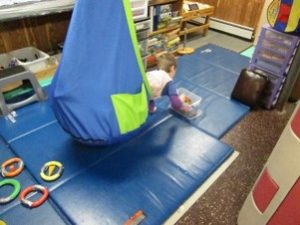Upper body strength and postural control generally do not come easily for children who have Sensory Processing Disorders. These are skills needed for maintaining an erect sitting posture so that fine motor skills can emerge efficiently. Strength and postural control is also needed for success when participating in childhood sport activities from which concepts of self esteem often emerge.
For children who have SPD, upper body strength and postural control may need to be taught. Being able to maintain postural control of the upper body while working at desk top requires control at the:
- Head – to position the eyes and ears to process information coming in to the brain from the external environment
- Eyes – control of the extra-ocular muscles of the eyes that allow for visual pursuits, visual fixations, and visual tracking of moving targets
- Hands and fingers as they are positioned to engage and manipulate objects
The activity below presents key elements that encourage the development of upper body strength and postural control.

Notice that the child is moving forward while in the prone position on his belly. When working in the prone position, the neck, face, and muscles of the upper back are placed in anti-gravity positions that require that they work harder to hold the body up. As they hold the body up, the hands are freed to manipulate objects while the eyes have the opportunity to inspect those objects from a “near” position.

As the child turns the swing to place the colored block into a ring of the same color, he begins to work in the “extended reach position”. This is a position assumed when the abdominal and pelvic muscles hold the upper body steady so that the arms can reach forward without the entire body toppling over. This is a key element of postural control.
The ability to maintain this degree of postural control while engaging in the typical games of childhood, contributes to success.


Comments are closed.